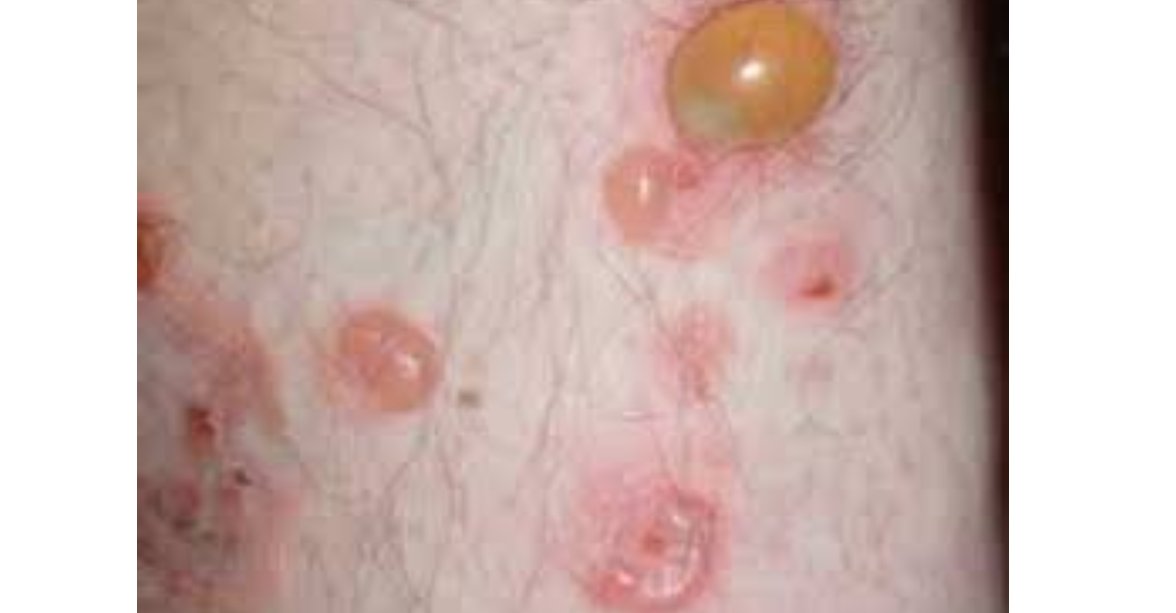
Bullous pemphigoid (BUL-us PEM-fih-goid) is a rare skin condition that causes large, fluid-filled blisters. They develop on areas of skin that often flex — such as the lower abdomen, upper thighs or armpits. Bullous pemphigoid is most common in older adults.
Bullous pemphigoid occurs when your immune system attacks a thin layer of tissue below your outer layer of skin. The reason for this abnormal immune response is unknown, although it sometimes can be triggered by taking certain medications.
The blisters occur because of a malfunction in your immune system.
Your body's immune system normally produces antibodies to fight bacteria, viruses or other potentially harmful foreign substances. For reasons that are not clear, the body may develop an antibody to a particular tissue in your body.
In bullous pemphigoid, the immune system produces antibodies to the fibers that connect the outer layer of skin (epidermis) and the next layer of skin (dermis). These antibodies trigger inflammation that produces the blisters and itching of bullous pemphigoid.

The signs and symptoms of bullous pemphigoid may include:
Copyright 2026 © Dr .Parveen Yadav all rights reserved.
Proudly Scaled by Public Media Solution!